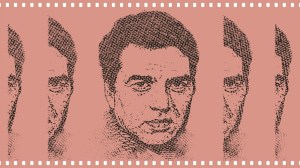RAIL TRAIL: Patiala State Mono Rail Tramways
The Patiala State Monorail Tramway engine is an unusual locomotive that runs on a single rail. Under this arrangement, nearly 98 per cent of the weight of the engine is placed on a single rail.

The Patiala State Monorail Tramway engine is an unusual locomotive that runs on a single rail. Under this arrangement, nearly 98 per cent of the weight of the engine is placed on a single rail. The rest is supported by an additional wheel on an outrigger running on the road surface, on the side of the track. The idea was to run this locomotive with mules but it was finally run by steam power. Mr Bowles, an engineer with a British firm, worked on this type of monorail system and was successful. The then maharaja of Patiala, H.H. Maharaja Bhupinder Singh, was greatly impressed by his engineering skills and took him in his service. Thus, the first monorail was built between Sirhind and Alampur and later Morinda in undivided Punjab. The monorail system, however, failed as it came a few years too late. It could only solve the problem of finding a replacement for bullock carts, a problem solved in a different way by the advent of the Railway system.
Four such 0-3-0 locomotives were supplied by Orenstein and Koppel of Berlin in 1907. One monorail still survives on the plinth of the Diesel Component Works in Patiala and the other, still in working order, can be seen at the National Rail Museum in New Delhi.
This over 100-year-old engine is perhaps the only working steam monorail in the world. You can still ride it every Sunday afternoon at the National Rail Museum.
The Railways and the 1964 Olympic Gold
The date: November 23, 1964. It was the 41st minute of the hockey finals at the 15th Olympic Games in Tokyo, the first on Asian soil. Appropriately, two Asian giants, India and Pakistan, were playing the match. All ears were glued to the radio (those were the days before the advent of TV) and time stopped in India, as it did for every Indian at the stadium in Tokyo.
The ever-dependable Mohinder Lal, India’s right half-back, walked slowly to the penalty spot that the umpire had pointed to in front of the Pakistani goal. Calm and composed, he took position and pushed the ball. It flew into the top of the net past the hapless Pakistani goalkeeper. India went ahead 1-0 and maintained that lead till the end of the match, regaining the Olympic hockey gold they had lost in 1960.
Mohinder Lal was a member of the Indian Railways and part of a great Railway heritage in Indian hockey. The penalty stroke that he converted was set up by another Railway man, Prithipal Singh, the penalty corner expert of the team, whose rasping shot had been stopped by a Pakistani defender with his leg. The 1964 team included another Railway man, mercurial centre forward Harbinder Singh, who also had a great tournament.
— J L singh, retired railway official
Did you know?
* Released in 1937, this is the first stamp on the Indian Railways. It depicts a portrait of King George VI and a 4-6-2-steam loco of the East Indian Railways along with mail cars.
* The first fully air-conditioned train ran in 1956 between Howrah and Delhi
* The first containerised freight service started in 1966 between Bombay and Ahmedabad
* The first vestibule fully air-conditioned train ran in 1956 between Delhi and Bombay
* The first train reserved exclusively for women ran in 1992 between Churchgate and Virar
* The first Shatabdi Express ran between New Delhi and Jhansi in 1988
* The first trunk route to be fully electrified in 1976 was New Delhi-Howrah
* The first cyber café on a railway platform was inaugurated on June 27, 2003 in New Delhi station
— Vikas Singh, rail enthusiast
- 01
- 02
- 03
- 04
- 05































